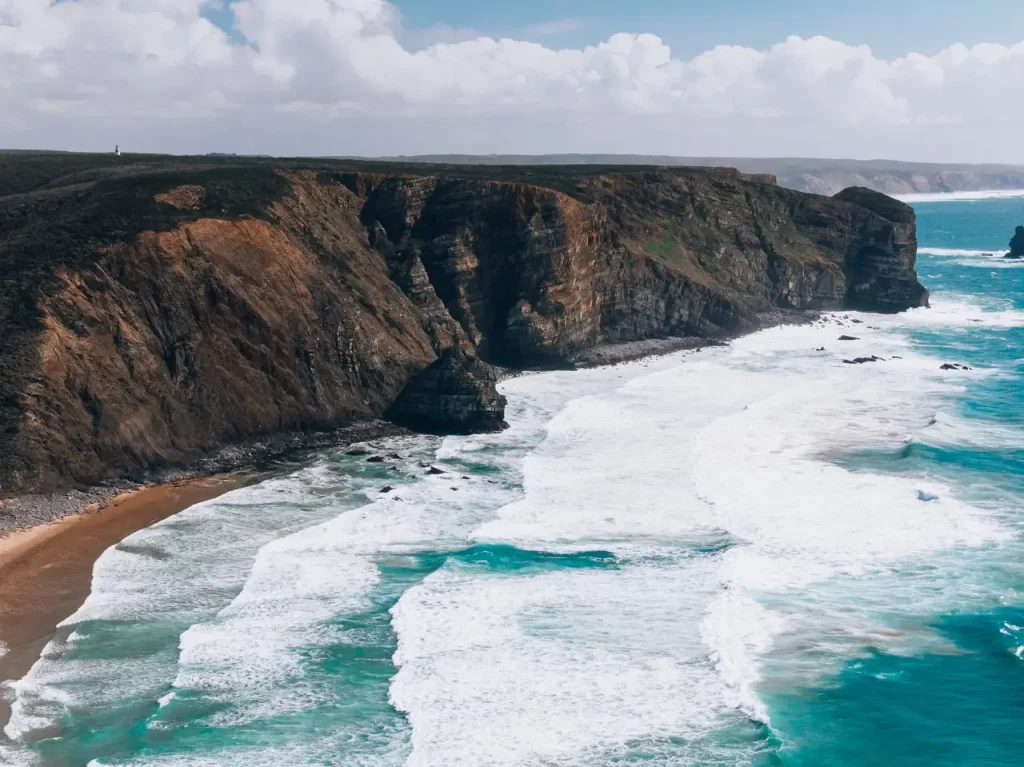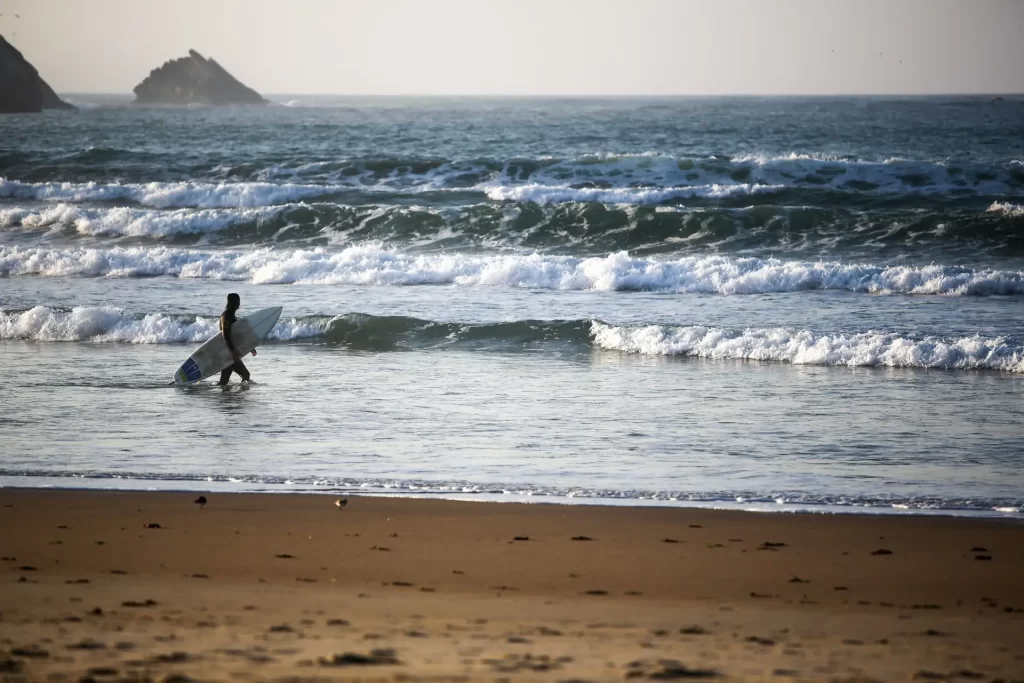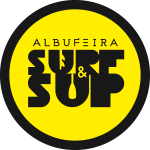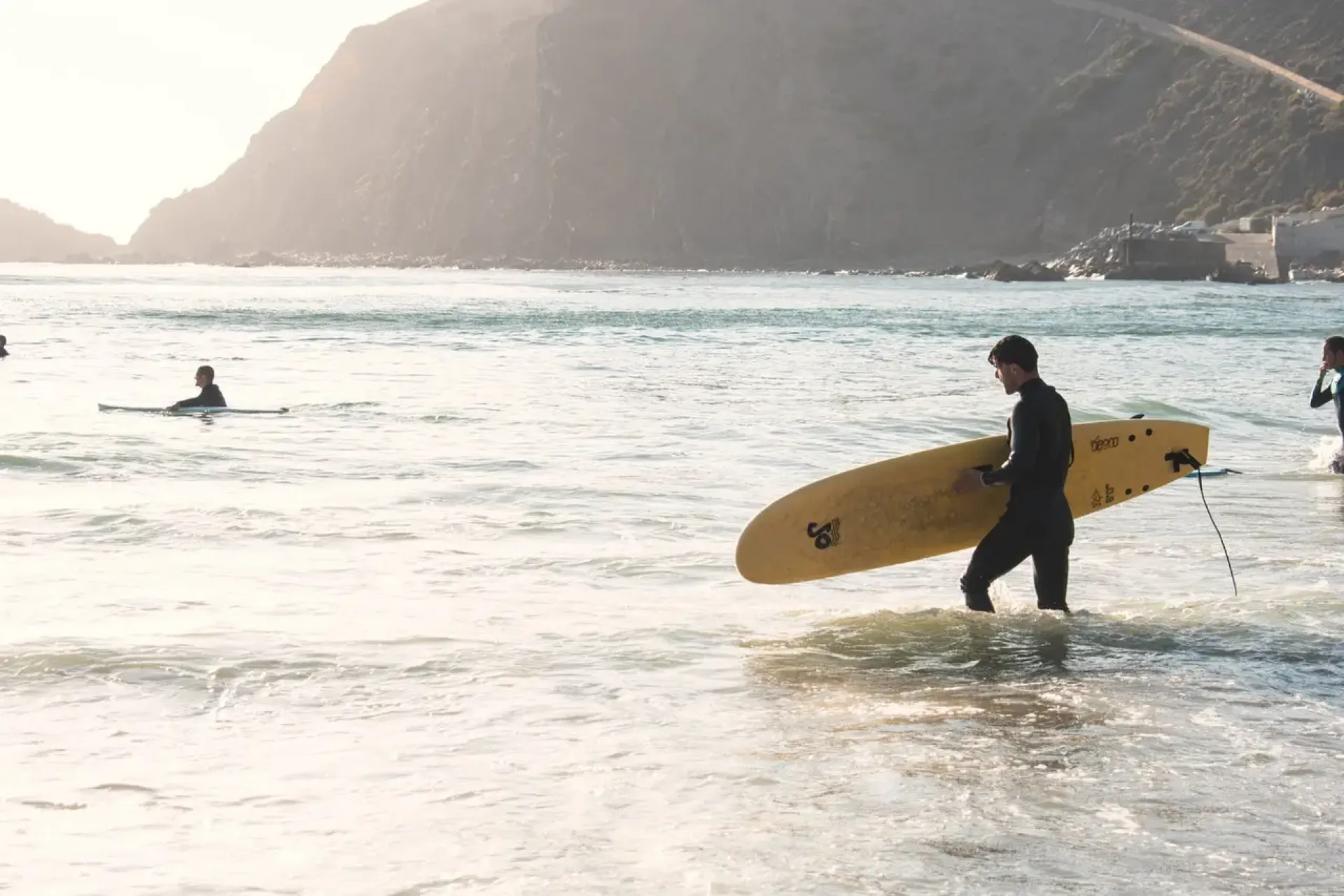Portugal has a coastline with more than 800 km full of some of the most beautiful seaside resorts in Europe: very long beaches with sand as far as the eye can see or small coves nestled between the rocks, deserted or lively. There is a beach for everyone.
Bearing the title of owner of some of the best waves in Europe, it’s no surprise that surfing in Portugal is one of the best surf destinations on the planet. If you’re a sportsman, adventurer or just a sun lounger lover, the hardest part will be which beach to choose.
On the other hand, the charming remote villages spread along its coast, the friendly people and the low prices of this country, envision the possibility of making Portugal a famous surfing destination.
In this guide, you can see the answers to some basic questions that every beginner surfer needs to know.
When is the best time to surf in Portugal?
The best time to surf in Portugal is from November to February, with April to August being for beginners. This time is when you have the best winds, therefore, the best waves.
The incredible Algarve coast, with its excellent climate, beautiful beaches and huge waves, makes it an ideal destination for surfing enthusiasts all year round, while the north of Portugal, particularly in the Minho and Douro regions, offers surfing quality for anyone looking to escape the southern crowds of the south in the summer months.
Despite being one of the best (if not the best) destinations in Europe for surfing, Portugal also offers surfers the opportunity to complement their holiday with lots of culture, fun activities and good traditional food.

Is it safe to surf in Portugal’s sea?
The mild Portuguese climate, its incredible beaches and its welcoming reception make this country a prime destination for surfers looking for the perfect wave.
Most beaches have been awarded the European blue flag, a guarantee of quality and safety. This year, more than 430 beaches in Portugal meet this requirement.
Even though temperatures in the south of Portugal are more favorable throughout the year and the water temperature is higher in summer around 20/22 C°, as opposed to 18/20 C° for Lisbon and 17/ 18 C° from the sea further north.
In the Algarve, we can count on average temperatures of 28°C in summer and 18°C in winter. In Lisbon, we find average temperatures of 27°C in summer and 16°C in winter.
Most beaches are equipped with sun loungers and beach huts, the cost of which varies from one beach to another depending on their popularity and trend, between 10 and 20 euros per day. Each concession is often accompanied by a bar or restaurant.
There is no shortage of activities, including kayaking, boating, stand up paddle or jet skis, there are many possibilities for leisure.
Why is a surf camp in Portugal a great surfing option?
At surf camps in Portugal you will find the perfect place to start or become a professional in this sport. In addition, you can find a multicultural environment where you will learn a new language, meet people from different places and discover a beautiful country.
Don’t think you’re the only one, many other people are interested in this type of stay and also want to have a good time just like you. Children’s camps are the best option for your children to spend their holidays in a safe and fun way.
Enjoy your favorite sport and learn everything you need to become a pro, so there’s no doubt that after that, you’ll be able to surf any wave that comes your way. And don’t worry about the level you bring, the instructors take care of preparing everyone for the level that best suits them and thus offering a more personalized training.

Is it worth surfing in Portugal?
When you start surfing and think about taking a trip to practice, you start looking for sites that indicate the best beaches with the best waves. But the best waves are often unsuitable for beginners. You need to be well informed before entering a surfing spot to be sure that it is suitable for your level.
In our article “The 7 best beaches to surf in Portugal“, you will see that they are all located in the central and southern areas of Portugal… and the further north, the more difficult the conditions. For starters, a good school can make a difference. They are the instructors who will tell you when you can enter the water, which beach, with which waves and who will guide you to reach an intermediate level and start looking for your own waves.
Where is the best place to surf in Portugal?
Center
- Nazaré: The 16.00 meter deep underwater canyon makes it ideal for extreme and professional surfers. Precisely, among the records of the biggest waves in Portugal, it was at the beginning of 2013, when the Hawaiian surfer Garret McNamara, invited by the Portuguese government to explore and examine the unique environment of Nazaré, managed to surf the biggest wave in history (about 30 meters), breaking his own record.
- Baleal: This wonderful stretch of pale golden sand protected by dunes is a paradise for waves, challenging and above all constant, making it ideal for beginners. Furthermore, due to its strategic position, Baleal is the perfect base to explore all the potential that Peniche has to offer.
- Costa da Caparica: Despite being easily accessible from Lisbon, Caparica is not as popular as other beaches within a 30-minute drive of the city. Plus, it has good waves all year round, they are accessible to any surfer and there are few crowds, so you can focus on surfing, learning and having fun, without the next surfer getting in your way.
- Guincho: It is located at the western end of the Serra de Sintra National Park and is somewhat isolated, it remains wild and protected from tourist development. Guincho is a long white sand beach with dunes and spectacular views of the coast. Its perfect little waves make it great fun and ideal for beginners. It can get a little crowded and is the base beach for some schools.
South/Algarve
- Praia de Odeceixe: This beach is located next to Ribeira de Seixe, which separates the Alentejo from the Algarve. Conditions are perfect for beginners as the sandbars and small waves of white foam provide a feeling of comfort and safety.
- Praia da Galé: Located in the center of the Algarve, it is one of the least touristy surf destinations in Portugal. The size and quality of waves cover a wide range of possibilities. The good thing about the area is that it has perfect surfing conditions for all levels.
- Ponta Ruiva: Ponta Ruiva Beach, in Vila do Bispo, owes its name to a huge ocher-colored rock at the southern end of the beach, next to which a famous wave forms among surfers. It’s not easy to get there by car, as the dirt road has areas where the slope is really big. But the effort is worth it, it is one of the most beautiful beaches to see the sunset and, of course, ideal for surfing.

Can beginners surf in Portugal?
In our article “The 7 best beaches to surf in Portugal“, you will see that they are all located in the central and southern areas of Portugal… and the further north, the more difficult the conditions. For starters, a good school can make a difference. They are the instructors who will tell you when you can enter the water, which beach, with which waves and who will guide you to reach an intermediate level and start looking for your own waves.
Is it possible to surf in winter in Portugal?
The fact that in the south of Portugal it only rains for a few days (the Algarve has more than 300 days of sunshine a year) makes it ideal for those who want to escape a merciless winter. The average daily temperature is between 15 and 20°C, so it is common to go to the beach on a sunny day.
In addition to the ideal conditions for surfing, the Algarve has 10 clubs and more than 30 surf schools. Everything you need to learn to master all the waves that await you on the Algarve coast.
As you can see, the Algarve has the beaches, the climate, the qualified instructors at the surf schools and the stunning landscapes waiting for you to catch the best waves. You’re just missing!

